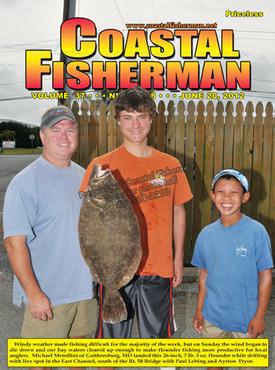


Article by Pat Schrawder
 SIMRAD’S NEWEST ENTRY IN THE TOUCH SCREEN GPS/PLOTTER ARENA
SIMRAD’S NEWEST ENTRY IN THE TOUCH SCREEN GPS/PLOTTER ARENA
Last week we started taking a look at what the manufacturers are bragging about this season and we began with Furuno’s TZ Touch Screen additions to their 3D line. This week, we’ll examine Simrad’s NSS series.
Simrad has had a NSO (Offshore) and NSE (Expert) systems and this season are touting their NSS (Sport) Touch Screen models. The comparison of the three systems shows that they have many features that are the same, such as their low power LED’s, rapid zoom and pan, design and sharing of charting, echo sounder and radar across multiple units. The main advantage of the newer NSS system is their touch screen operation and lower cost. For those reasons, we’ll just discuss the NSS Sport Touch here.
The NSS systems have color LED displays that are quite easily read in all lighting conditions with an adjustable screen brightness of 1200 cd/m2 max. They have models ranging in size from 6.4-inches to 8-inches to 12.1-inches. They have built-in GPS antennas with an available external option.
However, we have found that the internal antenna works very well in our area even in cases where the unit is flush mounted. The charting is also built-in with Insight USA cartography which is quite satisfactory but, if you want greater detail, you can purchase Navionics Platinum or Gold charts. The networking capability is limited to two displays.
Like many other units on the market today, the NSS displays are touch screen using their Touch Sensible™ technology that includes tap, touch and swipe gestures. There is a rotary controller for smooth precise adjustments of items like range, gain, etc. and minimal keypad use for repeated operations.
Beyond the basic GPS/plotter, the NSS system is compatible with a number of “add-ons”, the most popular of which is the broadband sounder module that uses advanced digital processing and the broadband radar 3G or 4G that consumes low power and can be mounted in many locations where conventional radar scanners cannot. According to Simrad, it also eliminates the “main bang” dead zone of conventional radar units. Broadband radar units are best for closer range navigation.
Simrad also offers the conventional HD digital radar radome or open array models but they are more expensive and should not be mounted where you are going to be standing close by.
Other options are their StructureScan™ Sonar imaging that offers SideScanning and DownScanning for full 180 degree coverage, Sirius satellite weather/radio, SonicHub™ Audio serving that will play MP3 files via their USB drive and/or interface with your iPhone, iTouch or iPod. All of these options can be controlled from the main NSS screen. Simrad also offers their optional AIS Class B unit that overlaps the presence of other vessels on your main screen.
You can also interface the NSS system to one of their popular autopilot systems. However, you must have a Simrad pilot version AP24 or AP28 in order to control the autopilot from your NSS screen. If you have one of their older pilot models, you can still interface them but you will have to control the pilot from the pilot control head itself.
This is a Simnet driven NMEA 2000 system as it is designed but can be operated with NMEA 0183 to some extent by the use of a NMEA converter. I do not recommend this system be purchased and installed by oneself unless you are very NMEA 2000 knowledgeable. Although Simrad calls the units “plug and play”, you will often find that there are additional cables needed that will add to the cost when you are comparing prices. It can be very frustrating when you are installing the system to find that there are more cables needed and you don’t have them. I might add that this is not unique to Simrad. Any NMEA 2000 system will require certain specific cables that you need to determine in advance.
Otherwise, I find this to be a very nice system that is pretty simple to use and easy to see in bright sunlight. Their 6.4-inch unit is a touch screen GPS/plotter that includes an internal GPS antenna and built-in Insight USA cartography that is the perfect answer for smaller vessels. You just need to add your preferred transducer type.
Pat and her husband, Larry are owners of L&L Marine Electronics on Golf Course Road in West Ocean City, MD.